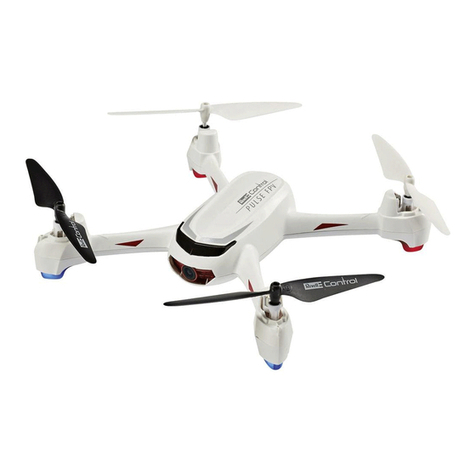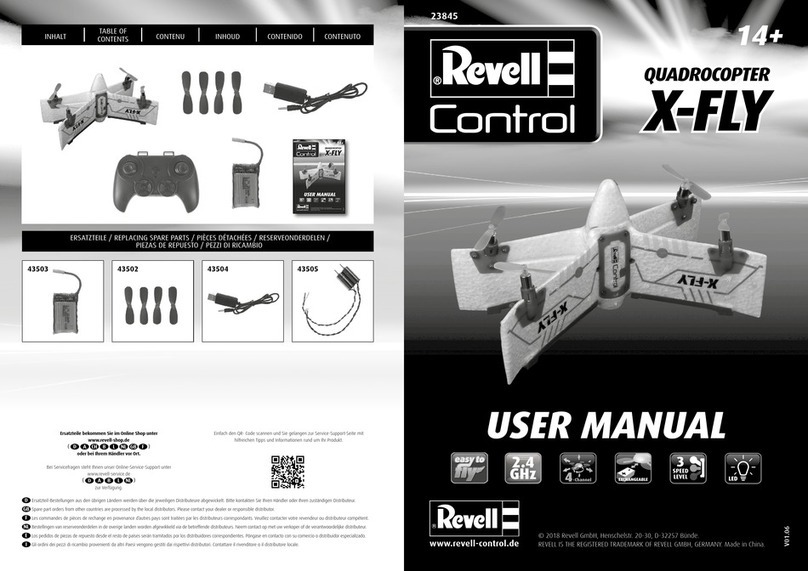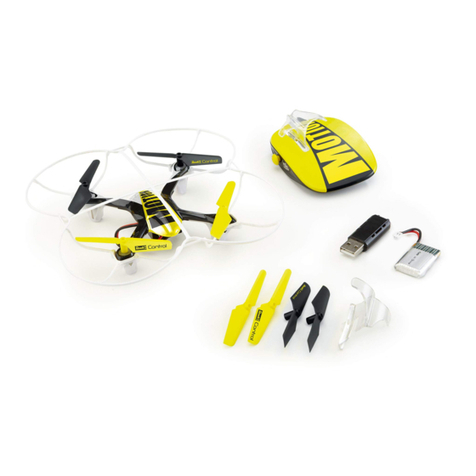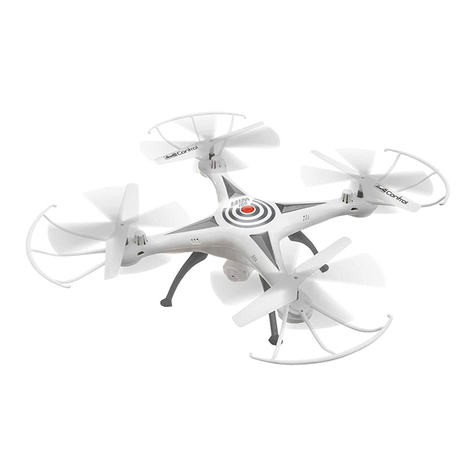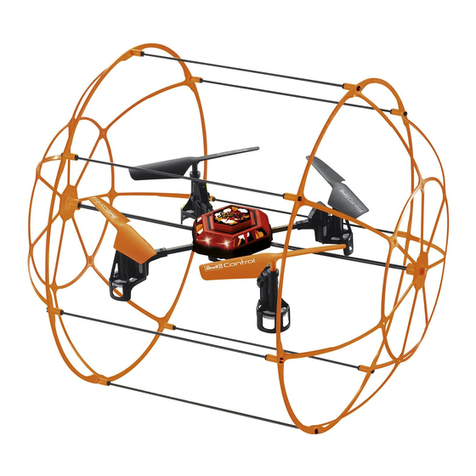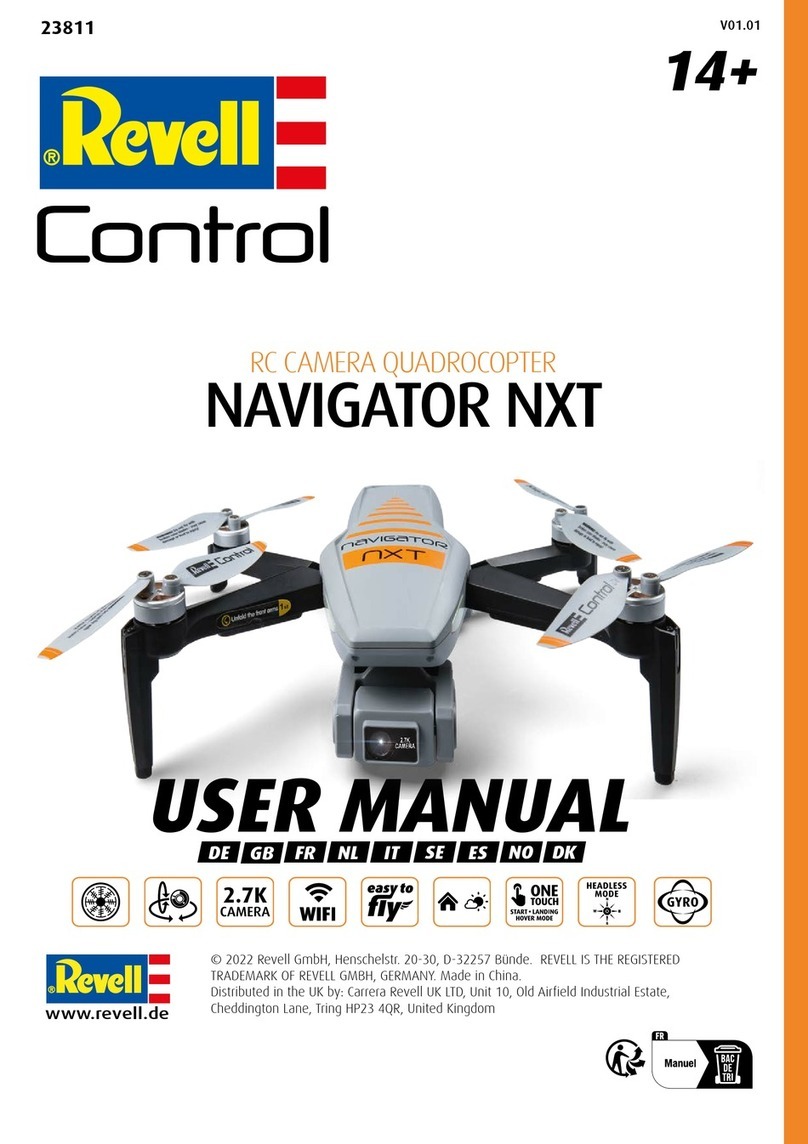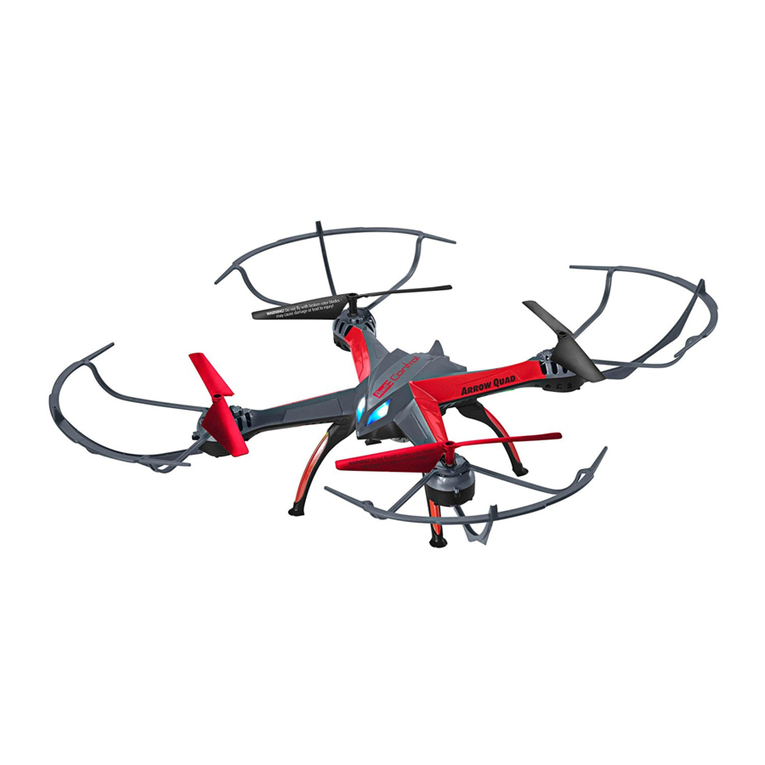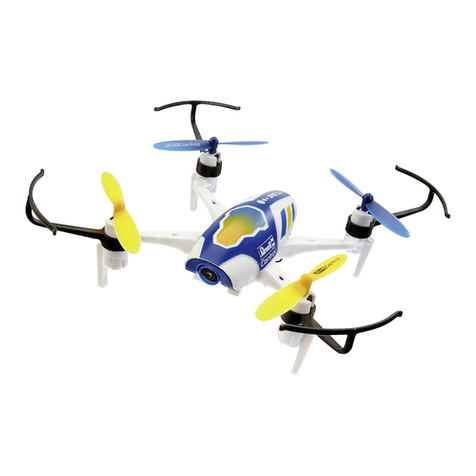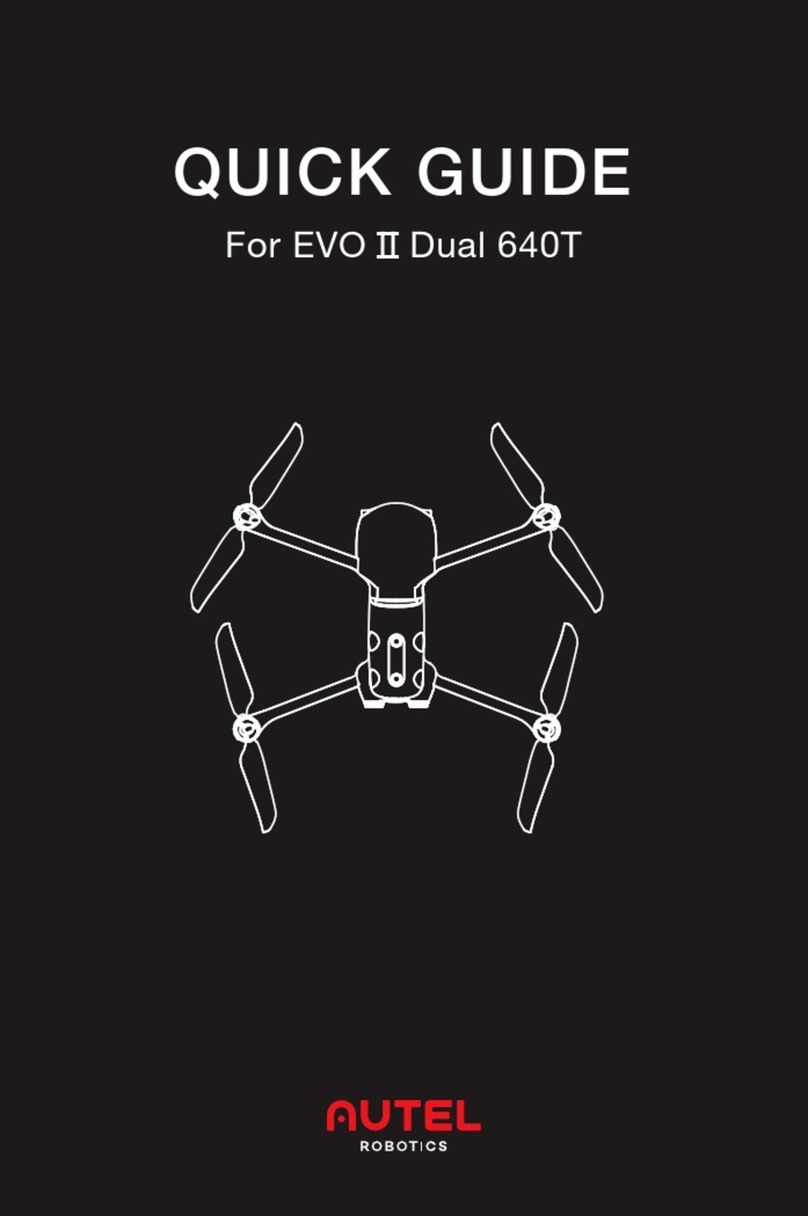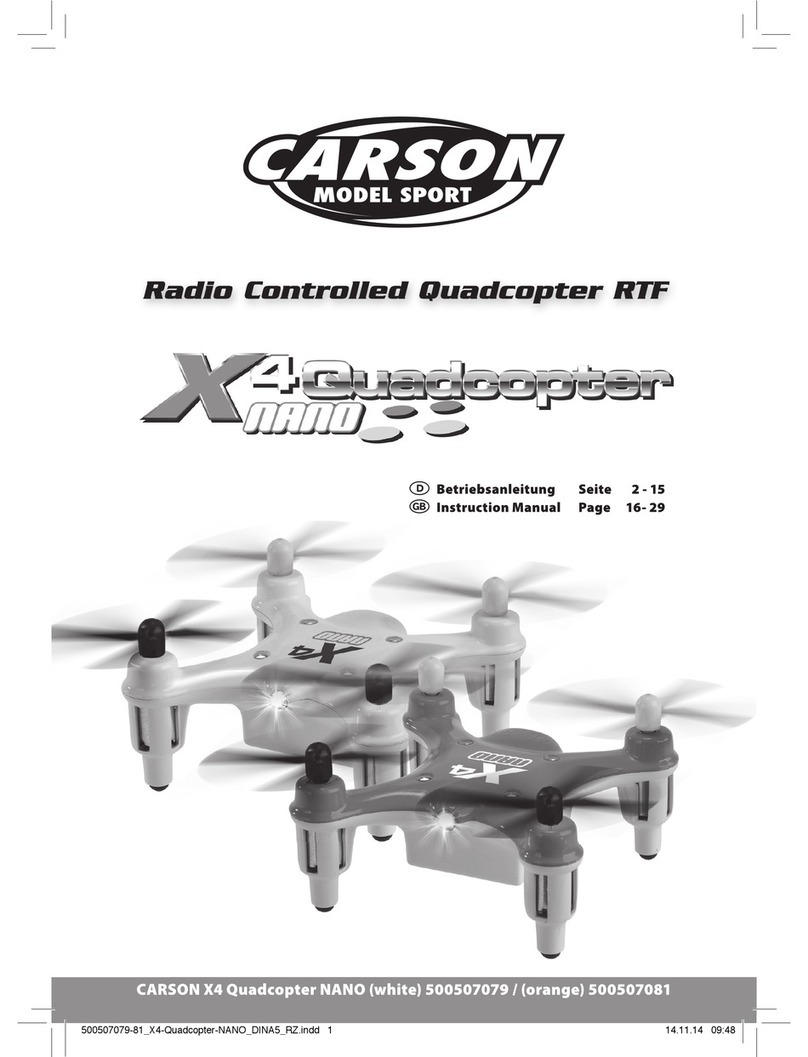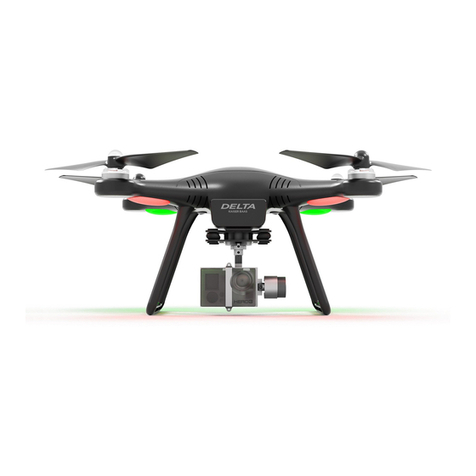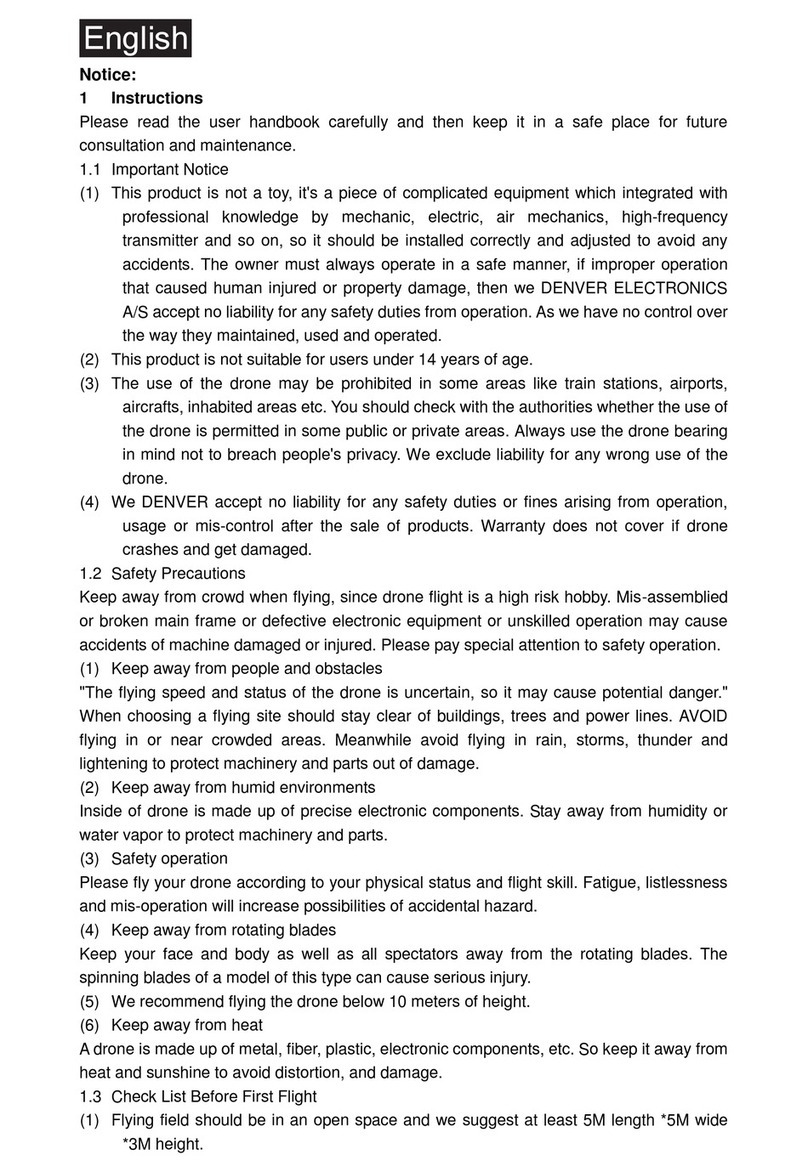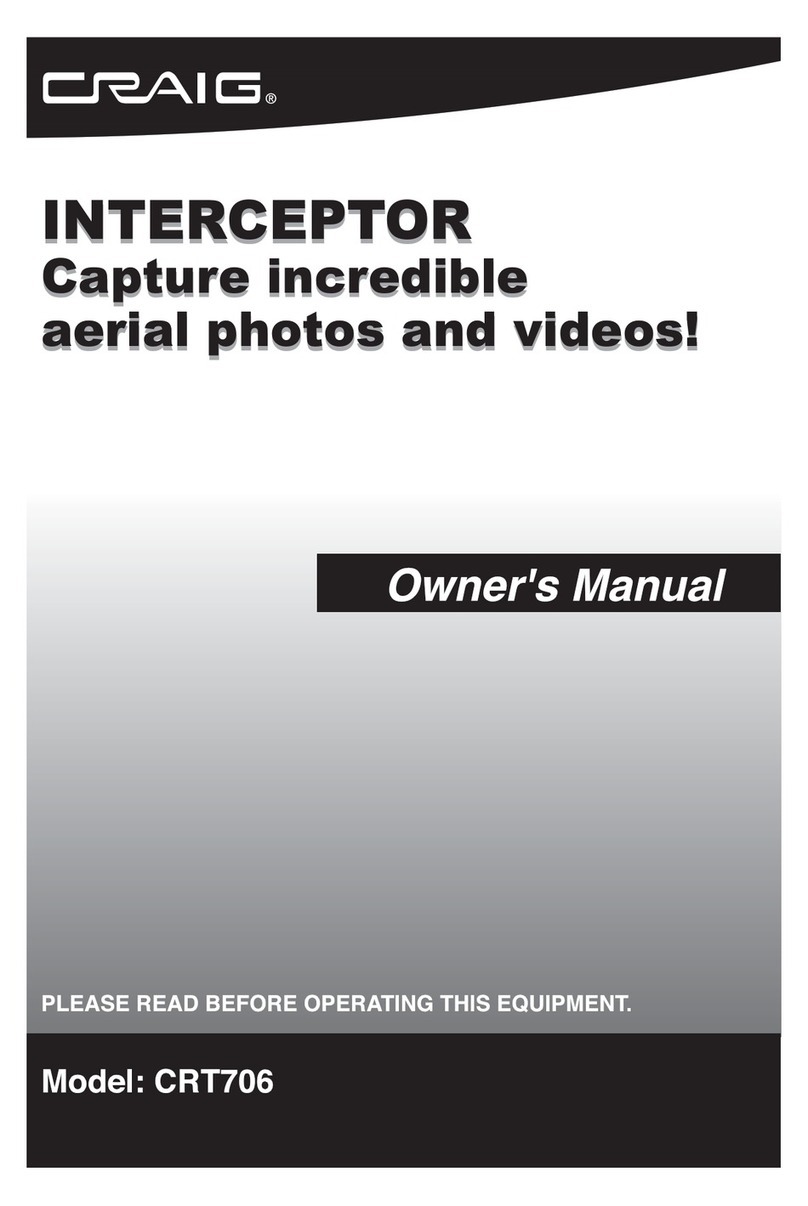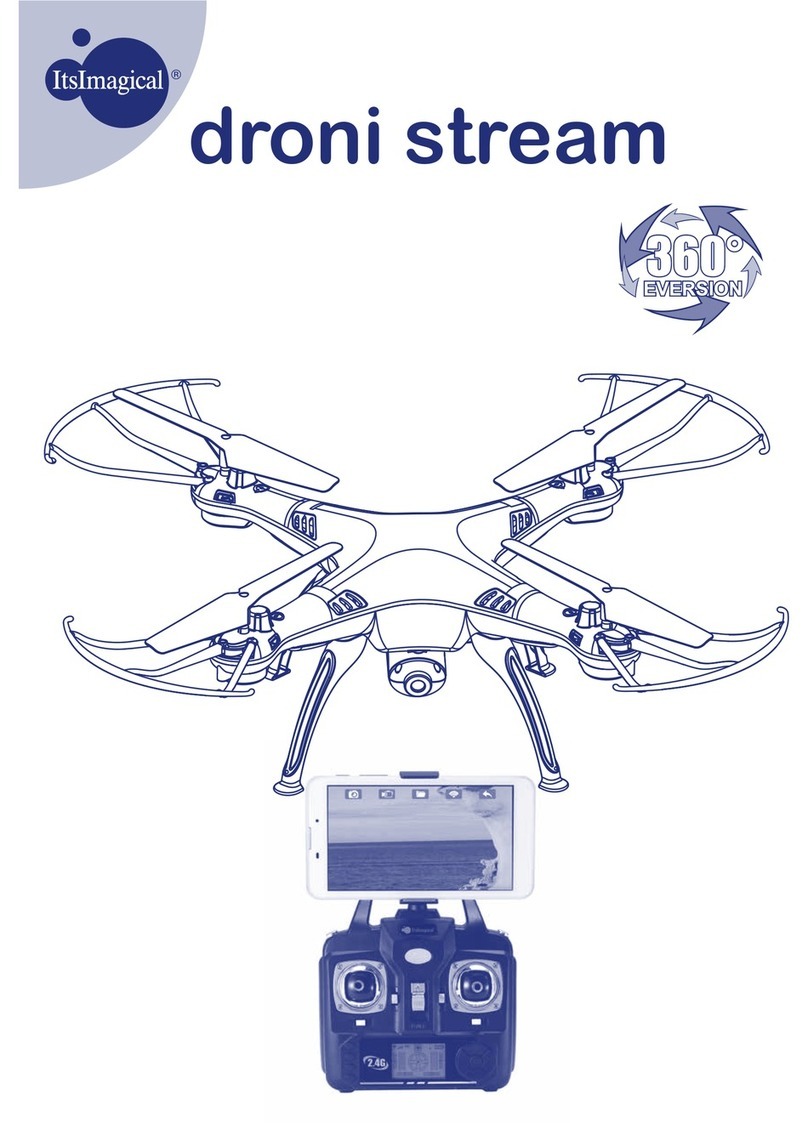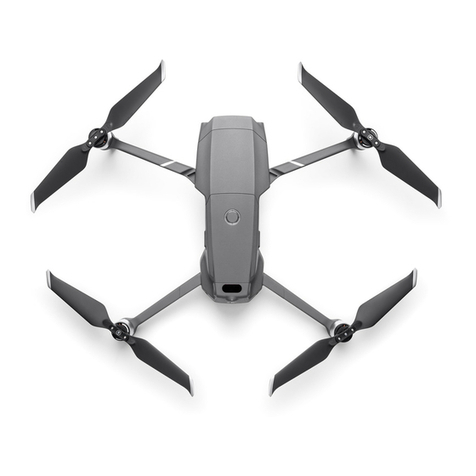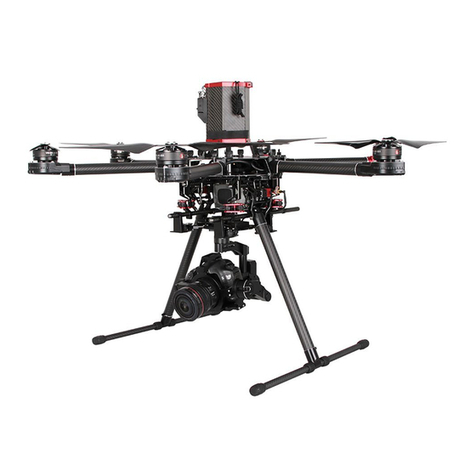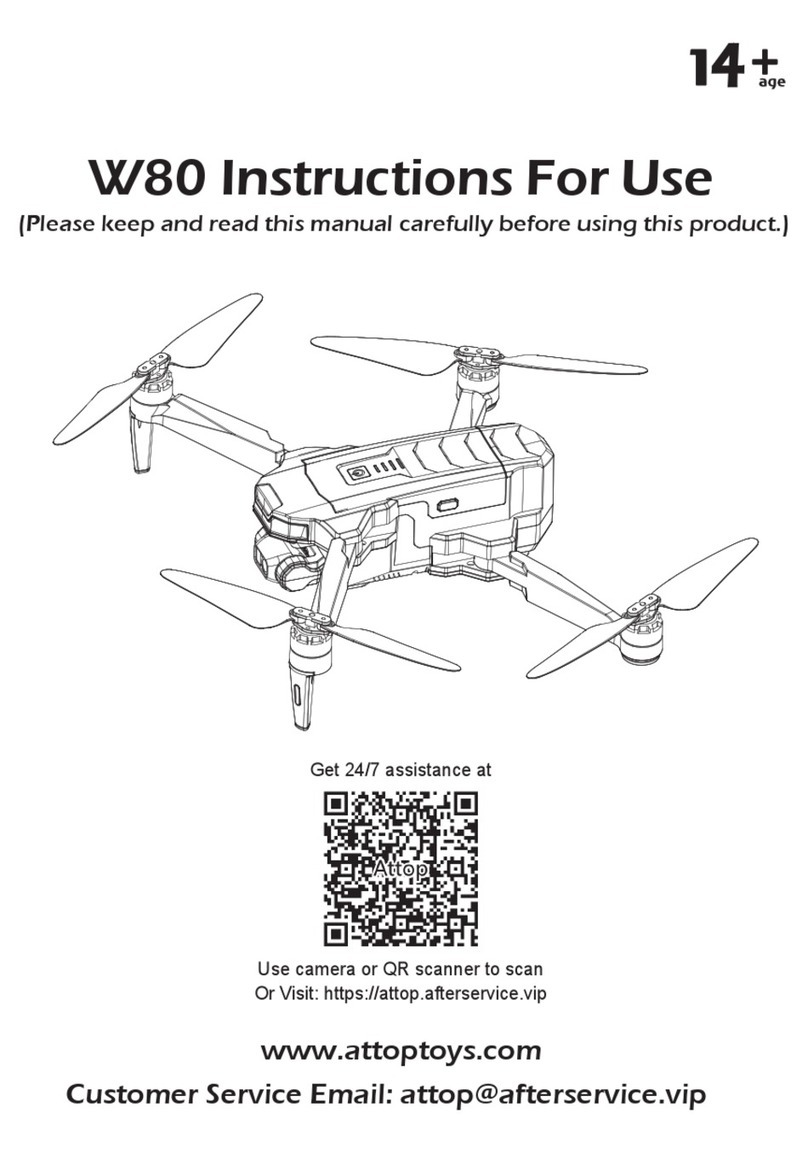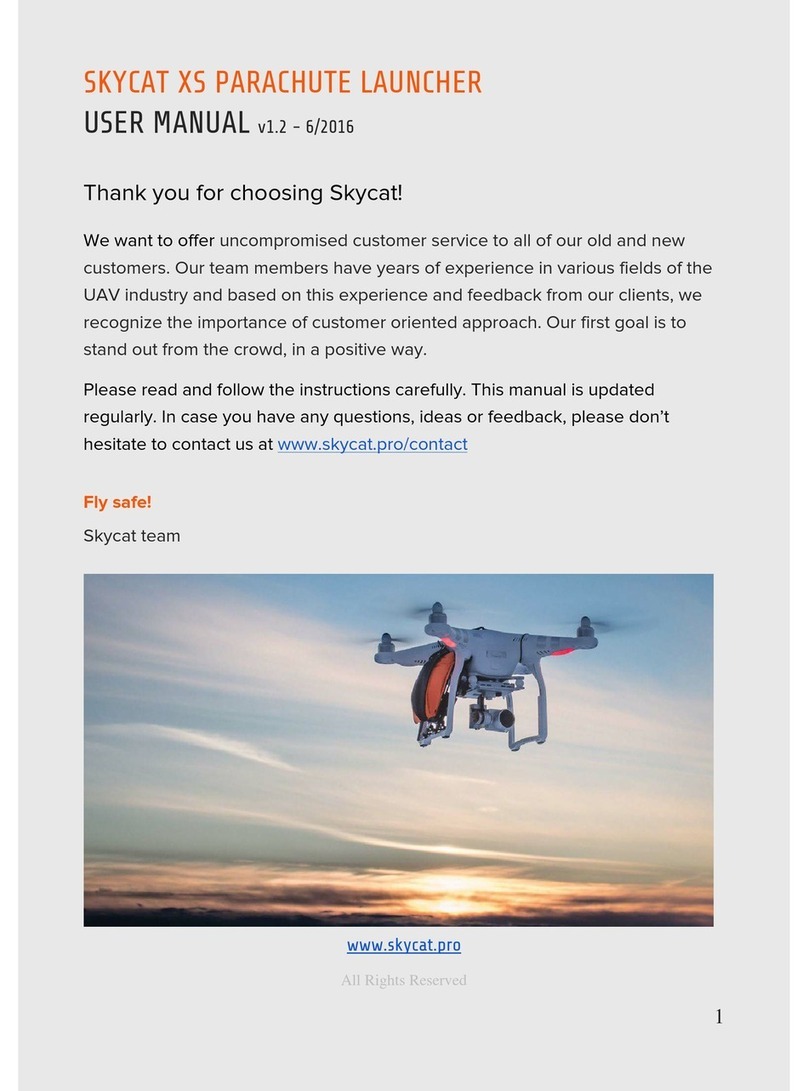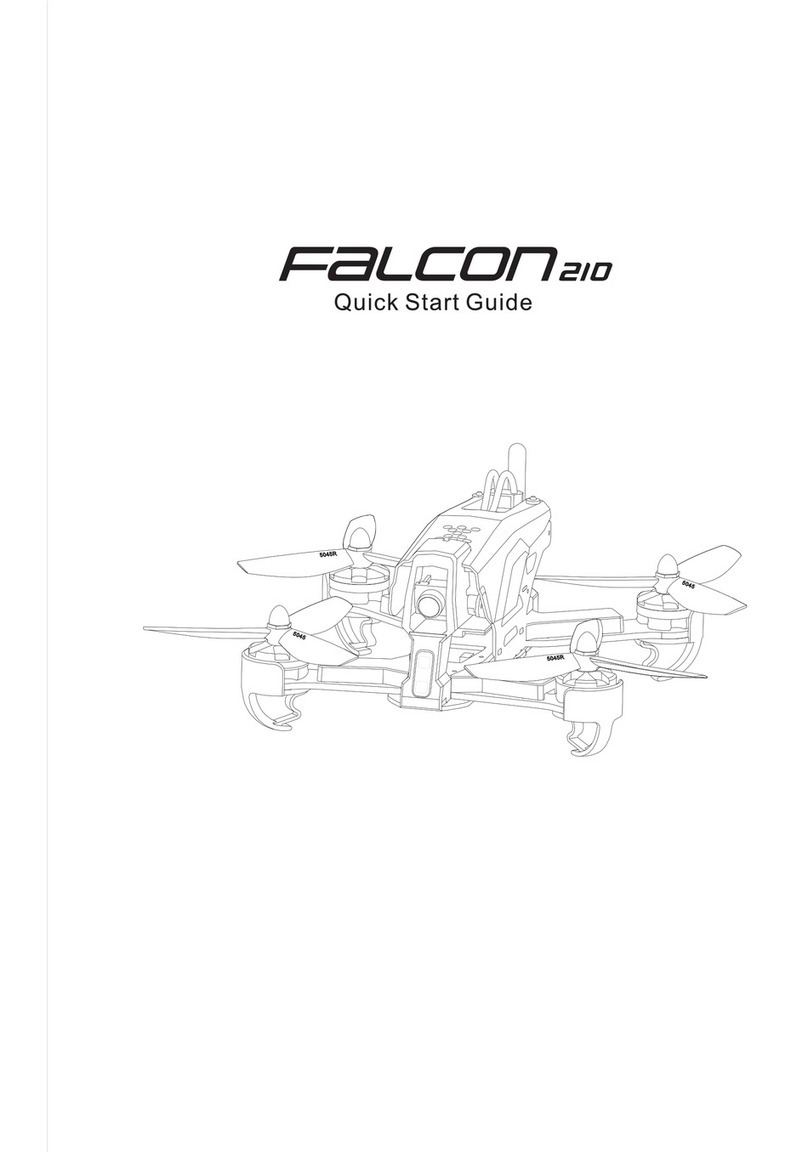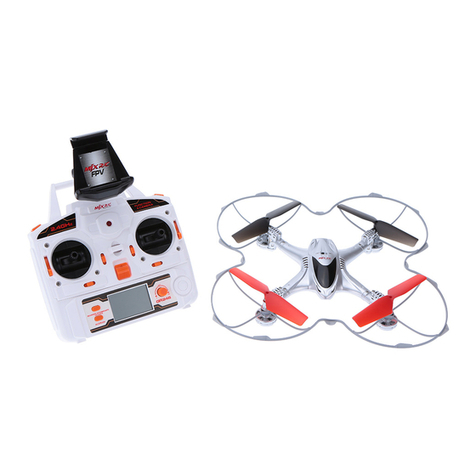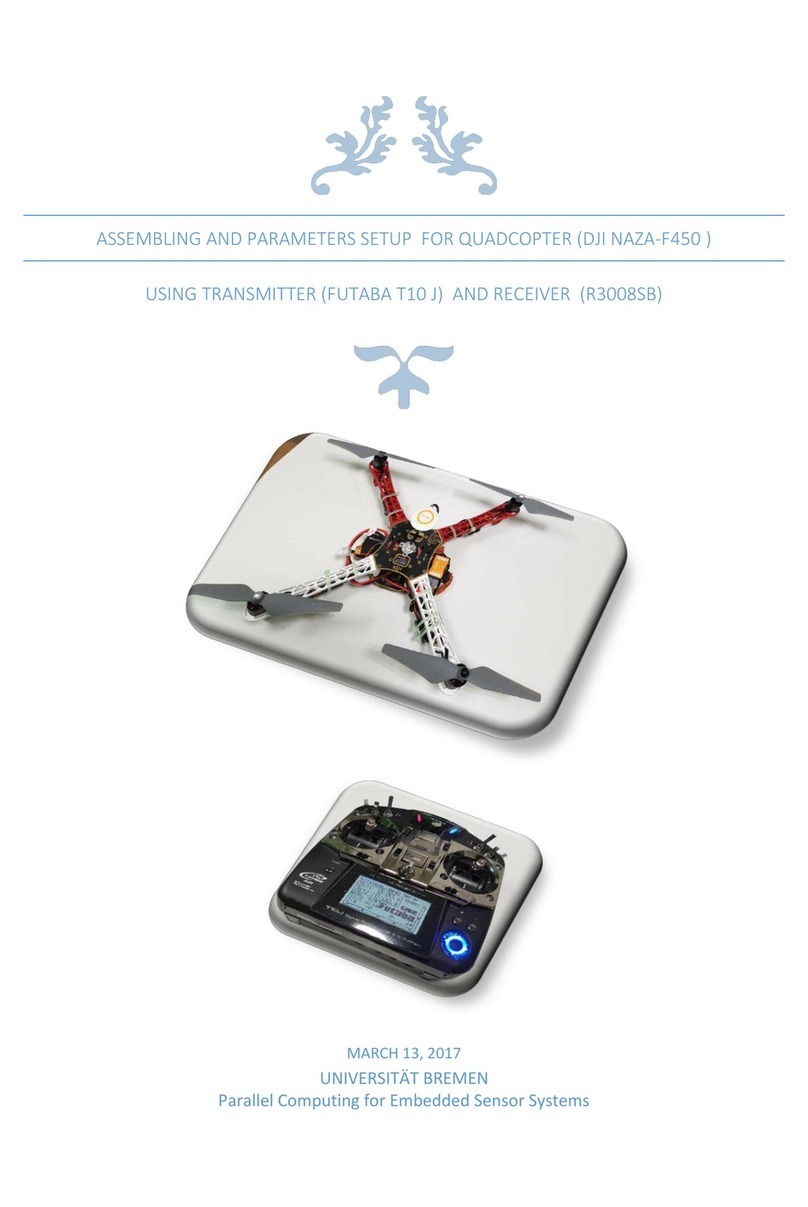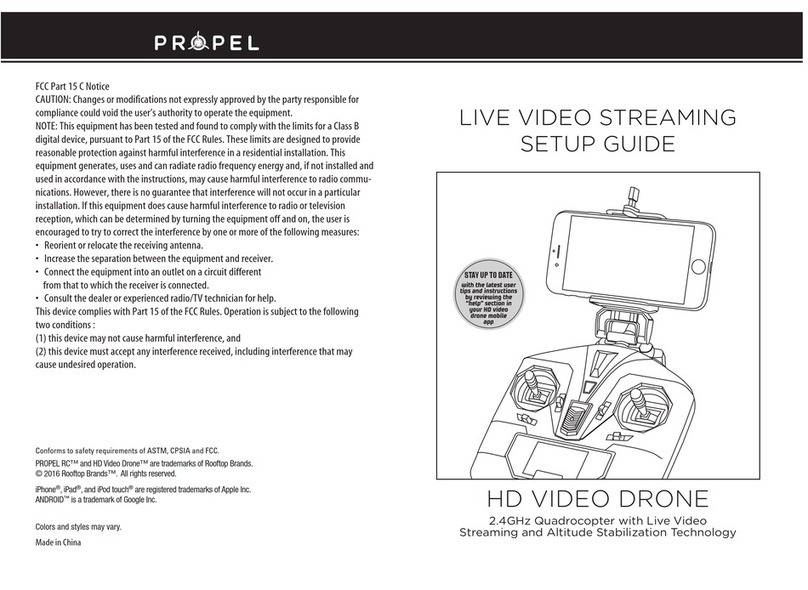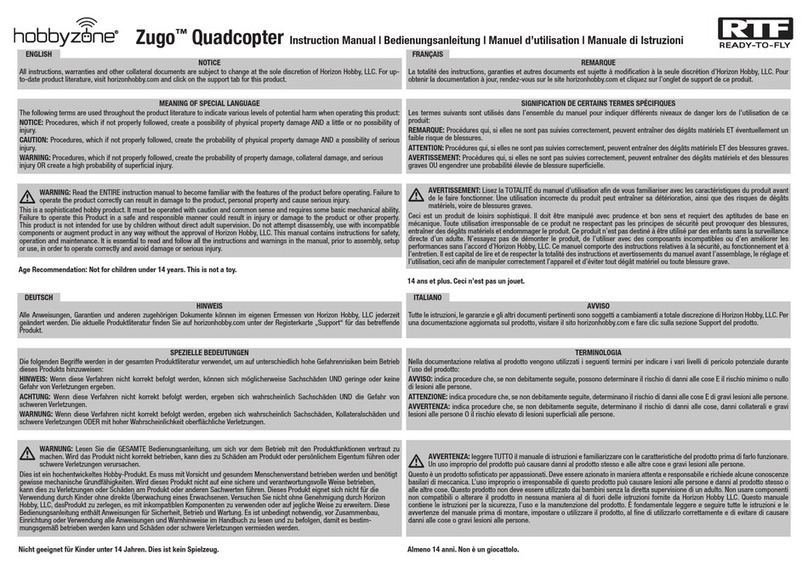
18 19
23935 - 23936
IMPORTANT FEATURES
Quadrocopter:
•The remote control is also a
pocket-size transport box
• With three speeds, flip
function, and headless mode
• Remote control in high-quality
matte - rubber finish
avoid losing control of the
model. Inattentive and
careless use can lead to
considerable damage.
•Do not operate the model
near people, animals, bodies
of water or power lines.
•This model is not suitable for
people with physical or
mental limitations. We
recommend that people who
are unfamiliar with remote
control models operate the
model under the guidance
ofan experienced pilot.
•A model should never be
operated under the influence
of drugs or alcohol.
•In general, it must be
ensured that the model
cannot injure anyone,
including taking into account
potential malfunctions and
defects.
•The model may only be
repaired or modified with
genuine Revell control spare
parts. Otherwise, the model
can be damaged or pose a
danger.
Safety instructions:
•Before commissioning for the
first time, make sure that you
have read and understood the
entire manual.
•Please keep the manual and
packaging as they contain
important instructions.
•The user may only operate this
model in accordance with the
instructions for use in this
operating manual.
•This model is suitable for
children who are at least 14
years of age. Adult supervision
is required when flying it.
•This model is suitable for
useindoors and in outdoor
areas when there is no
precipitation or wind.
•Keep your hands, face and
loose clothing away from the
model during operation.
•Switch off the remote control
and model when not in use.
•Remove the batteries from the
remote control when it is not in
use.
•Always maintain visual contact
with the model in order to
•In order to prevent risks,
always operate the model
from a position which
provides an easy line of
retreat if necessary.
Safety instructions for
flying models:
•You are operating your
aircraft in the general air
traffic. As the pilot, you are
responsible for your model.
You are liable for your
model and any damage
resulting from its operation.
•If you want to use your
aircraft commercially, you
need an ascent permit.
•Before commissioning for
the first time, familiarize
yourself with the functions
of the model.
•Check that the product is
working correctly before
every flight.
•Observe the instructions
of the manufacturer at all
times.
•Always note the wind and
weather conditions and any
hindrances.
•You must always swerve
away from manned aircraft
immediately and land right
away.
•Do not fly over private
property owned by other
people, crowds of people,
military objects, hospitals,
power plants, correctional
facilities and similar.
•Do not fly close to airfields
(<1.5 km).
19
•Never fly without direct visual
contact with the model, it
must be in the direct field of
vision at all times. It is illegal
to control a model using only
a video image.
•Failure to observe these
safety instructions may make
you liable to prosecution!
•Information and additional
help is available from the
Association for Unmanned
Air Vehicles under
„http://www.uavdach.org“
•Flying models outdoors has
required mandatory liability
insurance since 2005. Contact
your private liability insurer
and make sure that your
new and earlier models are
included in your insurance
coverage. Request written
confirmation and keep this in
a safe place. Alternatively, the
DMFV offers a trial member-
ship free of charge online at
www.dmfv.aero. This includes
insurance.
Remote control safety
instructions:
•We recommend new alkali
manganese batteries for the
remote control. Single-use
batteries for this remote
control and other electrical
devices operated in the
home can be replaced with
environmentally-friendly
rechargeable batteries.
•As soon as the remote
control no longer functions
reliably, new batteries should
be inserted and/or the batter-
ies should be charged.
English
